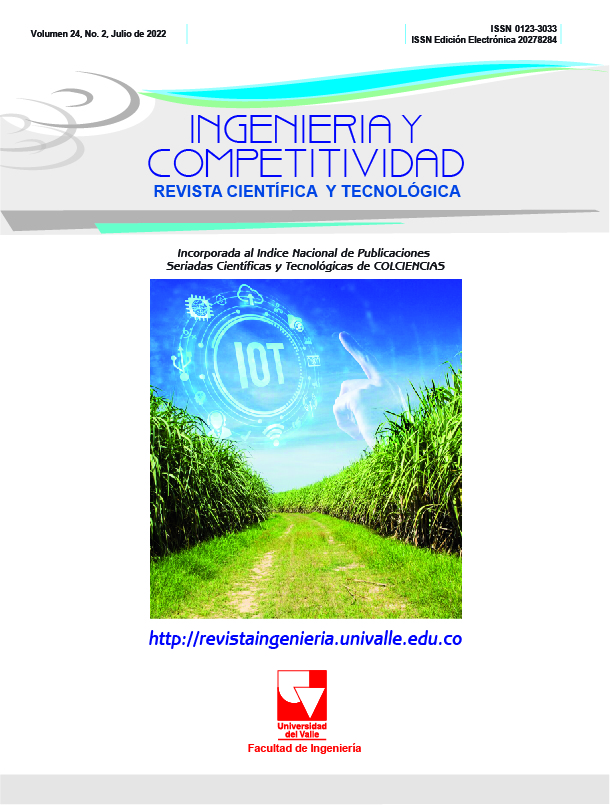Modelos estadísticos inferenciales para relacionar los rechazos de un banco de pruebas en frio y los defectos de maquinado en los barrenos de ensamble de los árboles de levas
Contenido principal del artículo
En la industria manufacturera es de gran importancia reducir las desviaciones de maquinado tan pronto como sea posible para evitar costos asociados con los retrabajos. La definición de modelos matemáticos que predicen futuras fallas en el diagnóstico de motores de combustión asociados con los errores en los maquinados es una manera que ayuda a ahorrar tiempo y dinero en el proceso. Este trabajo propone el análisis y establecimiento de correlaciones entre las desviaciones del maquinado en cabezas de cilindros y los rechazos de un banco de pruebas en frio en una empresa que produce automóviles. Para determinar las relaciones, se midió una muestra de cabezas y motores en un período de dos meses y mediante estadística inferencial se establecieron modelos estadísticos. Se logró establecer 77 modelos
estadísticos que permiten predecir qué maquinados de las cabezas de cilindros están contribuyendo a los rechazos y
por tanto ajustar las herramientas correspondientes. Debido a la gran cantidad de datos de los resultados de los 77 modelos, este artículo muestra solo un modelo el cual es uno de los más representativos. Utilizando este modelo
estadístico fue posible saber cuál característica de la herramienta debe ser ajustada además también se encontró que los límites de prueba para la presión de aceite tienen que ser ajustados en el banco de pruebas en frio
- Banco de pruebas en frío
- Maquinado de cabeza de cilindros
- Estadística inferencial
- Correlación de variables
- Control de calidad
Moica S, Radulescu E. Statistical controls have a significant influence on Non Quality Cost. Cases study in a company those manufacturing aluminum casting components. Procedia Technology. 2014; 12. DOI: https://doi.org/10.1016/j.protcy.2013.12.519
Wang P, Zhang D, Li S, Chen B. Machining error Control by integrating Multivariate Statistical. Chinese journal of aeronautics. 2012 December; 25(6). DOI: https://doi.org/10.1016/S1000-9361(11)60465-2
Qin SJ, Dong. On data science for process systems modeling, control and operations. IFAC-PapersOnLine. 2020; 53(2). DOI: https://doi.org/10.1016/j.ifacol.2020.12.540
Melhem M, Ouladsine M, Pinaton J, Ananou B. Regression methods for predicting the product´s quality in the semiconductor manufacturing process. IFAC-PapersOnLine. 2016 January; 49(12). DOI: https://doi.org/10.1016/j.ifacol.2016.07.554
Jia L, Chen C, Xu S, Shen J. Fabric defect inspection based on lattice segmentation and template statistics. Information Sciences. 2019 October; 512(2). DOI: https://doi.org/10.1016/j.ins.2019.10.032
Qi Q, Li T, Scott P, Jiang X. A correlational study of areal surface texture parameters on some typical machined surfaces. Procedia CIRP. 2015 December; 27. DOI: https://doi.org/10.1016/j.procir.2015.04.058
Mahmoud Ali M, Mohamed Omran AN, Abd-El-Hakeem Mohamed. Prediction the correlations between hardness and tensile properties of aluminium silicon alloys produced by various modifiers and grain refineries using regression analysis and an artificial neural network model. Engineering Science and Technology, an International Journal. 2021 February; 24(1). DOI: https://doi.org/10.1016/j.jestch.2020.12.010
Mikó B. Assessment of flatness error by regression analysis. Measurement. 2020 February; 171. DOI: https://doi.org/10.1016/j.measurement.2020.108720
Heidarian F, Palkowski H. Predicting the eccentricity of tubes by developing a multiple regression model in tube drawing process with tilted die. Procedia manufacturing. 2020 January; 50. DOI: https://doi.org/10.1016/j.promfg.2020.08.013
Fogaça , Luiz de Souza D, Manéa F. Comparison between cold and hot test procedures in a company manufacturer of diesel engines. 2018; 25(2): p. 343-353. DOI: https://doi.org/10.1590/0104-530x3094-16
Alvey A, Cerrato G. Application of NVH techniques to engine production line test. Manufacture. 2005 Mayo;: p. 16-19. DOI: https://doi.org/10.4271/2005-01-2452
RAJAGOPAL J. An Introduction to Cold Testing. USA:; 2001.
Martyr AJ, Plint MA. Engine testing: The desing, building, modification and use powertrain test facilities. 4th ed. London: Butterworth-Heinemann; 2012.
Arasaratnam I, Habibi S, Kelly C, Fountaine TJ, Tjong J. Engine fault detection using vibration signal reconstruction in the crank-angle domain. SAE International. 2011 May;(2011-01-1660). DOI: https://doi.org/10.4271/2011-01-1660
Maul A, Mari L, Torres Irribarra D, Wilson M. The quality of measurement results in terms of the structural features of themeasurement process. Measurement. 2018 February; 116. DOI: https://doi.org/10.1016/j.measurement.2017.08.046
Diamoutene A, Noureddine F, Kamsu-Foguem B, Barro. Quality control in machining using order statistics. Measurement. 2017 November; 116. DOI: https://doi.org/10.1016/j.measurement.2017.11.036
(17). Stief A, Baranowski J. Fault diagnosis using interpolated Kernel density estimate. Measurement. 2021 Mayo; 176(109230).
https://doi.org/10.1016/j.measurement.2021.109230 DOI: https://doi.org/10.1016/j.measurement.2021.109230
Descargas

Esta obra está bajo una licencia internacional Creative Commons Atribución-NoComercial-CompartirIgual 4.0.
Los autores que publican en esta revista están de acuerdo con los siguientes términos:
Los autores ceden los derechos patrimoniales a la revista y a la Universidad del Valle sobre los manuscritos aceptados, pero podrán hacer los reusos que consideren pertinentes por motivos profesionales, educativos, académicos o científicos, de acuerdo con los términos de la licencia que otorga la revista a todos sus artículos.
Los artículos serán publicados bajo la licencia Creative Commons 4.0 BY-NC-SA (de atribución, no comercial, sin obras derivadas).


 https://orcid.org/0000-0001-8178-3366
https://orcid.org/0000-0001-8178-3366


